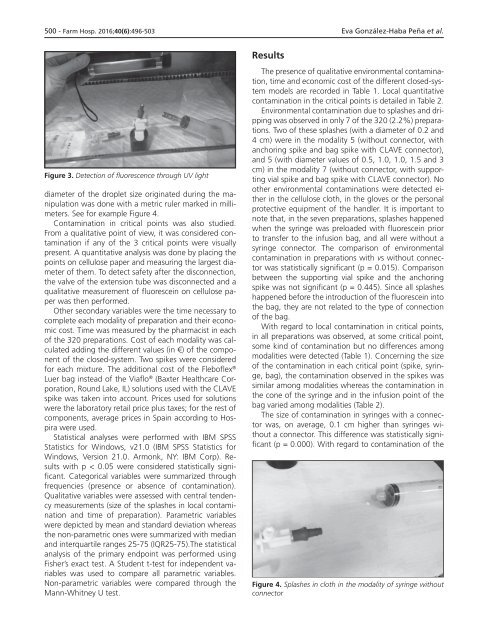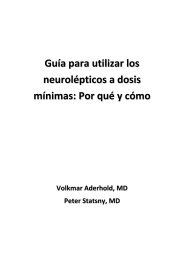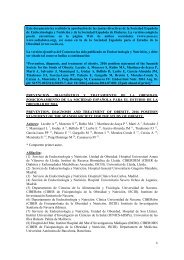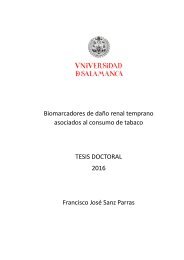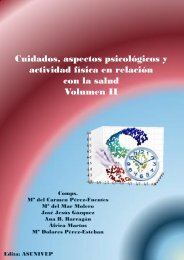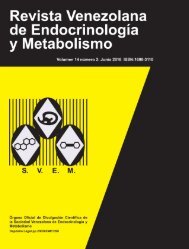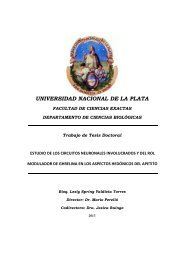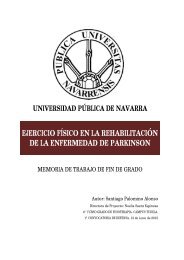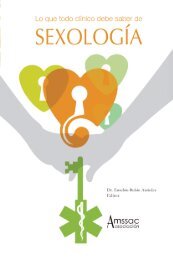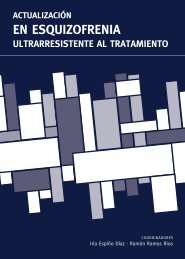Noviembre-Diciembre
156_v40n6(1)
156_v40n6(1)
Create successful ePaper yourself
Turn your PDF publications into a flip-book with our unique Google optimized e-Paper software.
500 - Farm Hosp. 2016;40(6):496-503 Eva González-Haba Peña et al.<br />
Results<br />
Figure 3. Detection of fluorescence through UV light<br />
diameter of the droplet size originated during the manipulation<br />
was done with a metric ruler marked in millimeters.<br />
See for example Figure 4.<br />
Contamination in critical points was also studied.<br />
From a qualitative point of view, it was considered contamination<br />
if any of the 3 critical points were visually<br />
present. A quantitative analysis was done by placing the<br />
points on cellulose paper and measuring the largest diameter<br />
of them. To detect safety after the disconnection,<br />
the valve of the extension tube was disconnected and a<br />
qualitative measurement of fluorescein on cellulose paper<br />
was then performed.<br />
Other secondary variables were the time necessary to<br />
complete each modality of preparation and their economic<br />
cost. Time was measured by the pharmacist in each<br />
of the 320 preparations. Cost of each modality was calculated<br />
adding the different values (in €) of the component<br />
of the closed-system. Two spikes were considered<br />
for each mixture. The additional cost of the Fleboflex ®<br />
Luer bag instead of the Viaflo ® (Baxter Healthcare Corporation,<br />
Round Lake, IL) solutions used with the CLAVE<br />
spike was taken into account. Prices used for solutions<br />
were the laboratory retail price plus taxes; for the rest of<br />
components, average prices in Spain according to Hospira<br />
were used.<br />
Statistical analyses were performed with IBM SPSS<br />
Statistics for Windows, v21.0 (IBM SPSS Statistics for<br />
Windows, Version 21.0. Armonk, NY: IBM Corp). Results<br />
with p < 0.05 were considered statistically significant.<br />
Categorical variables were summarized through<br />
frequencies (presence or absence of contamination).<br />
Qualitative variables were assessed with central tendency<br />
measurements (size of the splashes in local contamination<br />
and time of preparation). Parametric variables<br />
were depicted by mean and standard deviation whereas<br />
the non-parametric ones were summarized with median<br />
and interquartile ranges 25-75 (IQR25-75).The statistical<br />
analysis of the primary endpoint was performed using<br />
Fisher’s exact test. A Student t-test for independent variables<br />
was used to compare all parametric variables.<br />
Non-parametric variables were compared through the<br />
Mann-Whitney U test.<br />
The presence of qualitative environmental contamination,<br />
time and economic cost of the different closed-system<br />
models are recorded in Table 1. Local quantitative<br />
contamination in the critical points is detailed in Table 2.<br />
Environmental contamination due to splashes and dripping<br />
was observed in only 7 of the 320 (2.2%) preparations.<br />
Two of these splashes (with a diameter of 0.2 and<br />
4 cm) were in the modality 5 (without connector, with<br />
anchoring spike and bag spike with CLAVE connector),<br />
and 5 (with diameter values of 0.5, 1.0, 1.0, 1.5 and 3<br />
cm) in the modality 7 (without connector, with supporting<br />
vial spike and bag spike with CLAVE connector). No<br />
other environmental contaminations were detected either<br />
in the cellulose cloth, in the gloves or the personal<br />
protective equipment of the handler. It is important to<br />
note that, in the seven preparations, splashes happened<br />
when the syringe was preloaded with fluorescein prior<br />
to transfer to the infusion bag, and all were without a<br />
syringe connector. The comparison of environmental<br />
contamination in preparations with vs without connector<br />
was statistically significant (p = 0.015). Comparison<br />
between the supporting vial spike and the anchoring<br />
spike was not significant (p = 0.445). Since all splashes<br />
happened before the introduction of the fluorescein into<br />
the bag, they are not related to the type of connection<br />
of the bag.<br />
With regard to local contamination in critical points,<br />
in all preparations was observed, at some critical point,<br />
some kind of contamination but no differences among<br />
modalities were detected (Table 1). Concerning the size<br />
of the contamination in each critical point (spike, syringe,<br />
bag), the contamination observed in the spikes was<br />
similar among modalities whereas the contamination in<br />
the cone of the syringe and in the infusion point of the<br />
bag varied among modalities (Table 2).<br />
The size of contamination in syringes with a connector<br />
was, on average, 0.1 cm higher than syringes without<br />
a connector. This difference was statistically significant<br />
(p = 0.000). With regard to contamination of the<br />
Figure 4. Splashes in cloth in the modality of syringe without<br />
connector


